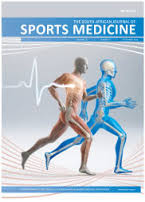The unexpected evolution of myocardial injury while infected with the coronavirus: A COVID-19 case report
DOI:
https://doi.org/10.17159/2078-516X/2022/v34i1a11110Abstract
Background: A novel virus breakout in December 2019, with diverse clinical manifestations, initially identified as infecting the respiratory system, has spread rapidly around the world, with adverse effects which have caused acute myocardial injury and chronic damage to the cardiovascular system in some individuals.
Aim: To present a clinical case with the manifestation of COVID-19 suspected to be either a mild case of either myocarditis or pericarditis. This case highlights a relatively atypical presentation of COVID-19 and the value of a coordinated approach to the unexpected sequences of patient recovery patterns that may require further specialist referral and intervention.
Findings: A ribonucleic acid (RNA) viral infection was confirmed by a polymerase chain reaction with reverse transcription (RT-PCR) and the patient was diagnosed with coronavirus disease 2019 (COVID-19). The presenting symptoms failed to resolve and the patient was admitted to the accident and emergency (A&E) department. Upon the second visit to the A&E department at 27 days postinfection, an electrocardiograph (ECG) was conducted revealing T wave inversion.
Implications: A coordinated approach is needed to combat the infection, develop cardiac-protective strategies and direct supportive measures.
Downloads
Downloads
Published
Issue
Section
License
Copyright (c) 2022 South African Journal of Sports Medicine

This work is licensed under a Creative Commons Attribution 4.0 International License.
The South African Journal of Sports Medicine reserves copyright of the material published. The work is licensed under a Creative Commons Attribution 4.0 (CC BY 4.0) International License. Material submitted for publication in the South African Journal of Sports Medicine is accepted provided it has not been published elsewhere. The South African Journal of Sports Medicine does not hold itself responsible for statements made by the authors.
How to Cite
- Abstract 588
- PDF 503






.png)